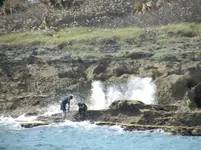Chagy,
Latin nouns have differnt endings to reflect the way they are used in a sentence. There are twelve forms (or more exactly cases), six singular and six plural, and there are three different sets of nouns, called declensions, each with different endings. There are also male and female endings. Annus is what they call a second declension male noun, and has the following forms:
Case Singular form Meaning Plural form Meaning
Nominative annus a year (subject of sentence) anni years (subject of sentence)
Vocative anne year (when speaking to one) anni years (speaking to them)
Accusative annum year (when object of sentence) annos years (when onject of sentence)
Genetive anni of a year annorum of the years
Dative anno to or for (or in) a year annis to or for years
Ablative anno by, with or from a year annis by with or from years
Of course, for some nouns, the case is meaningless. You'll never be speaking to a year, which is when you use the Vocative case.
Dominus, meaning Lord or Master, follows the same format, so "Anno Domini" is "In the year" (Dative singular) "of the Lord" (Genetive singular).
There is a similar process for verbs, adjectives, adverbs etc. In the good old days, you had to learn all of these by heart, which is why I can still remember them after all these years. Those Jesuits have a lot to answer for, though Latin comes in handy when looking at old maps. Greek has an even more complex structure, and many modern languages, such as French, have similar gramatical structures. You have to be very careful when looking up words in a dictionary, because the form (and the spelling) they show there is often quite different from individual usages.
Sorry, Chagy, but you did ask. Again, I really did not want to be pedantic about it. I'd swap my Latin for your practical knowledge any day, although the real trick is to gather together a team with complementary skills and knowledge, isn't it, as demonstrated so well by this particular thread.
LOL
Mariner





















